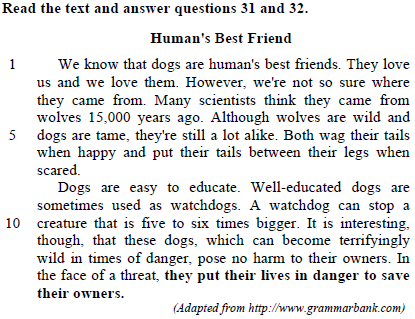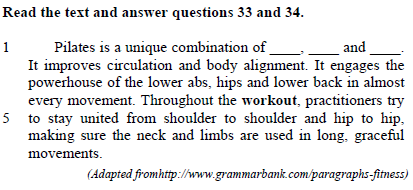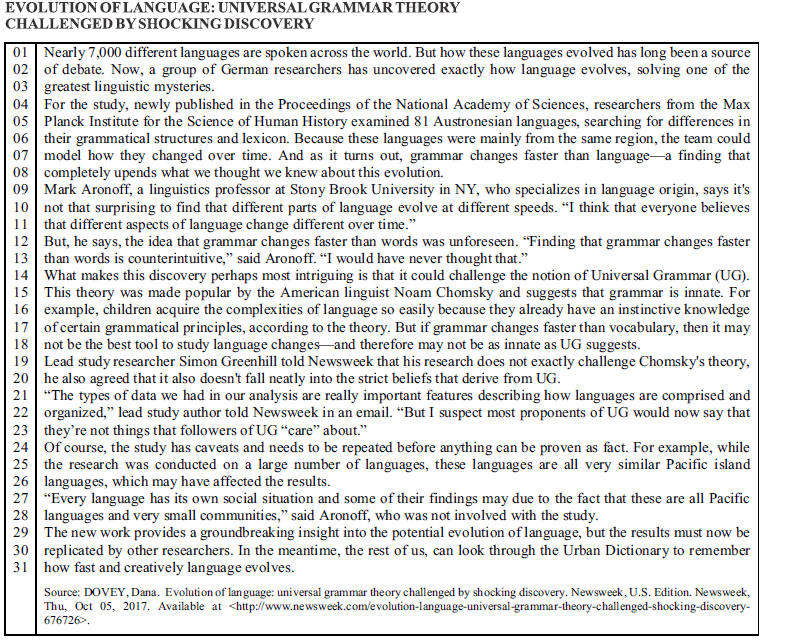Read the sentences and decide if they are Active (A) or Passive (P).
( ) Magazines are sold at newsstands everywhere.
( ) Many readers subscribe to the magazine.
( ) A large type edition is also printed.
( ) They also recorded it.
Choose the alternative that corresponds to the right order.
Write (T) for the True statements and (F) for the False statements, according to the text.
( ) Dogs and wolves present features that make many scientists think that dogs came from wolves.
( ) Although dogs are human’s best friends. People don’t know their origin, exactly.
( ) Watchdogs can put their owners in danger in times of threatening.
( ) Well-educated dogs when in danger are always tame.
Choose the alternative that corresponds to the correct order.
Read the following article and answer question based on the text.
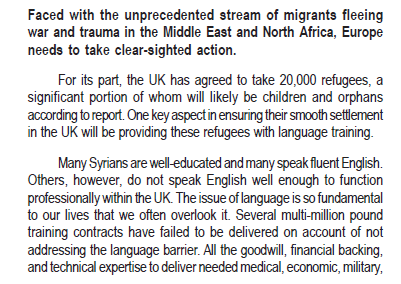

The main communicative purpose of the text is to:
Read the following article and answer question based on the text.


The excerpt “ The issue of language is so fundamental to our lives that we often overlook it" (paragraph 1) means that:
Read the following article and answer question based on the text.


In the last paragraph, the author concludes that providing refugees with language proficiency is:
Based on text, an adapted forum discussion, answer question below.
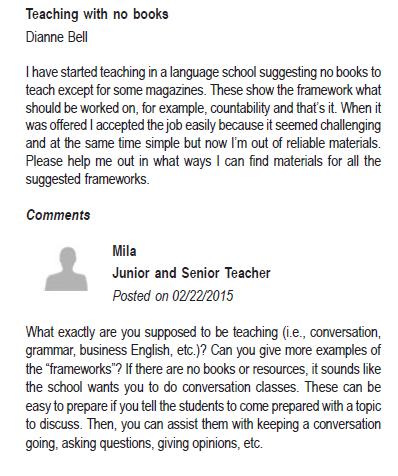

When Dianne says “…but now I'm out of reliable materials" she means that:
Question relate to the contents of the Parâmetros Curriculares Nacionais (PCN).
According to the PCN, while engaged in socio-interaction, people make use of three types of knowledge to construct meaning: systemic knowledge, world knowledge and knowledge of text organization. One example which illustrates the knowledge of text organization is the ability to:
The researchers believe that the people living in the Shandong province 5,000 years ago
The pronoun THEM in "And stop them" (first paragraph) refers in the context to:
Which of following describe the CORRECT speech organs according to the picture.
“A number of studies have supported the popular notion that children enjoy an advantage over adults in learning the pronunciation of a second language (Asher & Garcia, 1969; Scovel, 1969; Siegler, Krashen, & Ladefoged, 1975). Such studies, however, fail to prove that it is impossible for adults to acquire nativelike pronunciation, and several researchers have presented strong evidence to the contrary (Neufeld, 1980; Tarone, 1978). A widely cited study by Snow and Hoefnagel-Hohle (1977) found that adults were actually superior to children in the areas of pronunciation and sound discrimination, at least in the first stages of learning, and, although children excelled in later stages, the only subject in the study identified as acquiring nativelike pronunciation was the teenager. Flege (1987), in a review of the literature, notes that the results of many empirical studies are 'inconsistent with the expectations generated by the critical period hypothesis' (p. 174) and points out that the hypothesis itself is difficult to test, as it is hard to isolate speech learning from other factors associated with age." JONES, Rodney. Beyond 'Listen and Repeat': Pronunciation Teaching Materials and Theories of Second Language Acquisition. In: RICHARDS, J. C. & RENANDYA, W. A. Methodology in Language Teaching: An Anthology of Current Practice. Cambridge: Cambridge University Press, 2002. p.179.
According to the text it is CORRECT to say that

